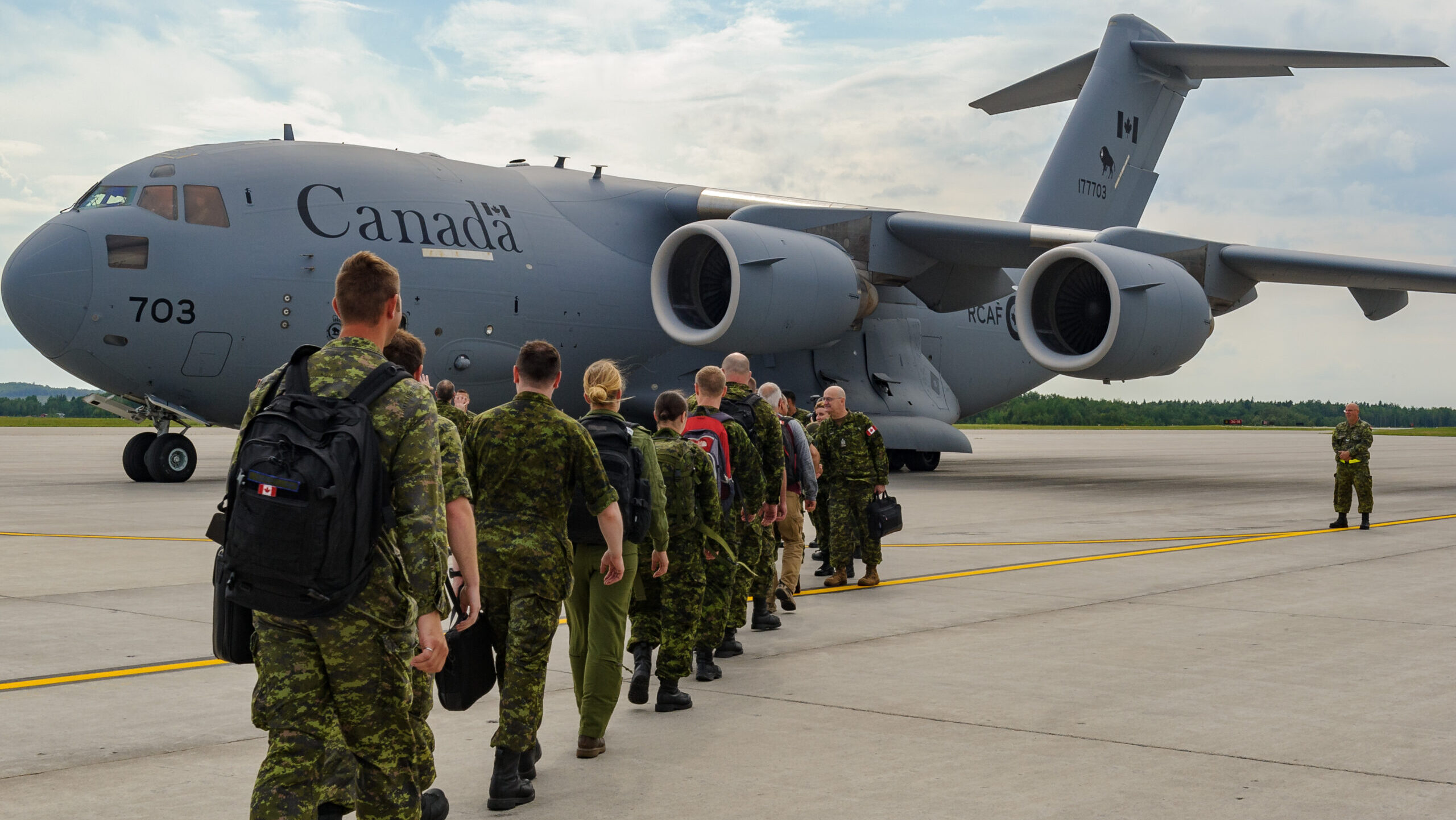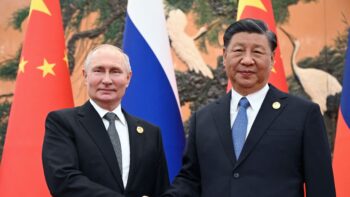
Members of the Airfield Activation Team board a CC-177 Globemaster at CFB Bagotville, Quebec heading to Romania to participate in Operation Reassurance (Canadian Department of National Defence)
BELFAST — Canada has pledged to increase national military spending by $5.9 billion over the next five years but that spending still will fail to meet the NATO target of contributing 2 percent GDP on defense funding until after 2030, at the earliest.
The multiyear commitment was announced by Prime Minister Justin Trudeau today as part of a new national defense policy paper — “Our North, Strong and Free” [PDF] — that also includes acquisition of new airborne early warning aircraft (AWACs), long-range army missiles and “tactical” helicopters, either crewed or uncrewed.
Additionally, Ottawa declared that it will spend $54 billion over the next 20 years to build out a “ready, resilient and relevant Canadian Armed Forces.”
The Trudeau government has long been accused by other NATO members of not contributing enough to the alliance, but in the face of such pressure today’s plan will reach just 1.76 percent GDP by the end of the decade.
“This is a significant increase in defence spending and is a major step forward in our effort to reach 2 [percent] of GDP, as agreed by NATO members at the Vilnius Summit in 2023,” states the new defense policy document.
It does not offer a timeline for the country to meet the 2 percent GDP target but it argues a move to double military spending between 2016-2017 to 2026-2027 is “on track.”
In 2023, Canada spent 1.38 percent GDP on defense, according to NATO figures [PDF], a lowly figure that ranks just ahead of Slovenia, Turkey, Spain and Belgium, the most meagre of alliance spenders, outside of Luxembourg.
Foreign Actors And ‘Our Arctic’
Detailing national military strategic priorities, Bill Blair, Canada’s defense minister, writes in the defense strategy of a need to “confront the reality of climate change” and warns “Our Arctic” is warming four times faster than the world average.
Canada, he adds, has also witnessed “greater Russian activity” in the air domain and “a growing number of Chinese vessels and surveillance platforms” across the Arctic Ocean, as the adversaries continue to map and collect data about the region.
Those issues are compounded by “states” building up military capabilities including “submarines, long-range aircraft and hypersonic missiles,” which are judged to “move faster and are harder to detect.”
This ease of access to the Arctic by “foreign actors” demands “our military has the tools to assert our sovereignty and protect Canada’s interests,” according to Blair.
Canda plans on significantly bolstering Arctic defenses through “greater presence, reach, mobility and responsiveness” that will be delivered by developing a “network of northern operational support hubs, a fleet of airborne early warning aircraft, deployable sensors on our coasts and underwater, a satellite ground station in the High Arctic, enhanced foreign intelligence capabilities, and new tactical helicopters,” according to the defense policy document.
Detailing the rotorcraft acquisition further, it adds a “mix of crewed and uncrewed aircraft” could be procured and to “ensure Canada has modern aircraft to contribute to international operations with allies, including
against threats from militaries with advanced capabilities.”
Only a brief reference is made to the acquisition of new Canadian Army long-range missiles, which “will be deployed to enable our forces to shoot at greater ranges than our adversaries in combat.”
The new acquisitions are in addition to big ticket items like Lockheed Martin F-35 fifth generation fighter jets and Boeing P-8A Poseidon maritime patrol aircraft already under order.
Elsewhere the strategy explicitly condemns Russia’s war in Ukraine and violation of international law, noting, “Russia has demonstrated that it is a reckless and hostile adversary willing to undermine peace and stability in pursuit of its goals, which is a reminder that Canadians cannot take global security for granted.”
More generally, Canada says that its “investments” will mainly focus on partnerships relating to the Euro-Atlantic and Indo-Pacific regions, “two regions that are fundamental to safeguarding … security and prosperity.”
Regarding North American Aerospace Defense Command (NORAD) collaboration with the US, the defense strategy also commits Ottawa to “further explore” national integrated air and missile defense capabilities, designed to achieve “significant benefits across all theatres” and strengthen “collective security.”
Cyber capabilities will also be enhanced through the establishment of the Canadian Armed Forces Cyber Command.
Australia tops up Ukraine military aid with $100M
Australia has already supplied Ukraine with 120 Bushmaster vehicles, six 155mm howitzers, 56 M113 armored vehicles, 14 special operations vehicles and its signature cardboard drones.



























